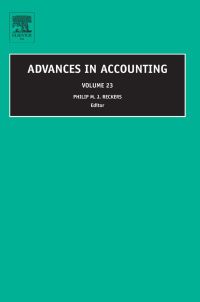Required information [The following information applies to the questions displayed below) On January 1. Year 1, the general ledger of a company includes the following account balances: Accounts Cash Accounts Receivable Supplies Equipment Accumulated Depreciation Accounts Payable Common Stock, $1 par value * Additional Paid in Capital Retained Earnings Totals Debit Credit $ 43,700 46,500 8,500 74,000 $ 10,000 15,600 10,000 90,000 47,100 $172,700 $172,700 During January Year 1, the following transactions occur January 2 Issue an additional 2,200 shares of 1 par value common stock for $44,000. January 9 Provide services to customers on account, $16,600. January 10 Purchase additional supplies on account, $5,900. January 12 Purchase 1,200 shares of treasury stock for $24 per share. January 15 Pay cash on accounts payable, $17,500. January 21 Provide services to customers for cash. $50,100 January 22 Receive cash on accounts receivable, $17.600. January 29 Declare a cash dividend of $0.20 per share to all shares outstanding on January 29. The dividend is payable on February 15. (Hint: The company had 10,000 shares outstanding on January 1, Year 1, and dividends are not paid on treasury stock.) January 30 Resell 600 shares of treasury stock for $26 per share. January 31 Pay cash for salaries during January, $43,000 a. Unpaid utilities for the month of January are $7.200 b. Supplies at the end of January total $6,100 c. Depreciation on the equipment for the month of January is calculated using the straightline method. At the time the equipment was purchased, the company estimated a service life of three years and a residual value of $11.000 d. Accrued income taxes at the end of January are $2,100, Adjusted Trial Balance January 31, Year 1 Accounts Debit Credit Cash Salaries Expense Utilities Expense Supplies Expense Depreciation Expense Income Tax Expense Accounts Receivable Equipment Supplies Accumulated Depreciation Accounts Payable income Tax Payable Common Stock Dividends Payable Additional Paid-in Capital Retained Earnings Treasury Stock Dividends Service Revenue Income Statement For the month ended January 31, Year 1 Revenues Expenses Income Before Taxes 0 $ 0 Classified Balance Sheet January 31, Year 1 Assets Liabilities Cash Accounts Receivable Supplie's $ 81,700 Accounts Payable 45,500 Dividends Payable 6,100 Utilities Payable Income Tax Payable 4,000 2,200 7,200 2,100 15,500 Total Current Liabilities Stockholders' Equity (Retained Earnings Common Stock Additional Paid-in Capital 133,300 (Dividends 74,000 (11,750) Total Stockholders' Equity $ 195,550 Total Liabilities and Stockholders' Equity 47.100 12,200 133,000 (2.200) Total Current Assets Equipment Less: Accumulated Depreciation Total Assets 190 100 $ 205,600 Journal entry worksheet 1 2 3 > Record the closing entry for revenue accounts. Note: Enter debits before credits. Date General Journal Debit Credit January 31 Journal entry worksheet 1 3 Record the closing entry for expense accounts. Note: Enter debits before credits General Journal Debit Credit Date January 31 Journal entry worksheet 1 2 Record the closing entry for dividend account Note: Enter debits before credits. General Journal Debit Debit Date January 31 Credit 0-1. Calculate the return on equity for the month of January Choose Numerator Return on Equity Ratio Choose Denominator Average Stockholders Equity 194,450 = Net Income $ Return on Equity Ratio Return on equity 2.2% 4,350 $ 0-2. If the average return on equity for the industry for January is 2.5%, is the company more or less profitable than other com the same industry? More profitable O Less profitable b. How many shares of common stock are outstanding as of January 31, Year 1? Number of common stock outstanding 12,200 c-1. Calculate earnings per share for the month of January. (Hint: To calculate average shares of common stock o beginning shares outstanding plus the ending shares outstanding and divide the total by 2.) Choose Numerator Earnings Per Share Choose Denominator = Earnings Per Share Average Shares Outstanding - Earnings Per Share 11,100 = $ 0 39 Net Income 4,350 c-1. Calculate earnings per share for the month of January (Hint: To calculate average shares of common stock outstanding take the beginning shoes outstanding plus the ending shares outstanding and divide the total by 2.) 7 Choose Numerator Net Income Earnings Per Share Choose Denominator Earnings Per Share Average Shares Outstanding - Earnings Per Share 11 1001 $ 0.39 4350 c-2. If earnings per share was $3,60 last year, an average of $3,60 per month) is earnings pershbe for January Year 1 better or worse than last year's average? O Better Worse

















